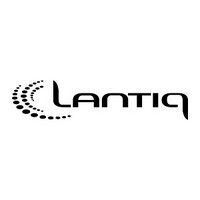PSB2115HV1.2 Lantiq, PSB2115HV1.2 Datasheet - Page 50

PSB2115HV1.2
Manufacturer Part Number
PSB2115HV1.2
Description
Manufacturer
Lantiq
Datasheet
1.PSB2115HV1.2.pdf
(317 pages)
Specifications of PSB2115HV1.2
Lead Free Status / Rohs Status
Supplier Unconfirmed
Available stocks
Company
Part Number
Manufacturer
Quantity
Price
Part Number:
PSB2115HV1.2
Manufacturer:
INFINEON/英飞凌
Quantity:
20 000
- Current page: 50 of 317
- Download datasheet (4Mb)
PSB 2115
PSF 2115
Functional Description
For transparent frames, the whole frame including address and control field must be
written to the XFIFOD.
The transmission of I frames is possible only if the IPAC is operating in the auto mode.
The address and control field is autonomously generated by the IPAC and appended to
the frame, only the data in the information field must be written to the XFIFOD.
If a 2-byte address field has been selected, the IPAC takes the contents of the XAD 1
register to build the high byte of the address field, and the contents of the XAD 2 register
to build the low byte of the address field.
Additionally the C/R bit (bit 1 of the high byte address, as defined by LAPD protocol) is
set to “1” or “0” depending on whether the frame is a command or a response.
In the case of a 1-byte address, the IPAC takes either the XAD 1 or XAD 2 register to
differentiate between command or response frame (as defined by X.25 LAPB).
The control field is also generated by the IPAC including the receive and send sequence
number and the poll/final (P/F) bit. For this purpose, the IPAC internally manages send
and receive sequence number counters.
In the auto mode, S frames are sent autonomously by the IPAC. The transmission of
U frames, however, must be done by the CPU. U frames must be sent as transparent
frames (XTF), i.e. address and control field must be defined by the CPU.
Once the data transmission has been initiated by command (XTF or XIF), the data
transfer between CPU and IPAC is controlled by interrupts.
The IPAC repeatedly requests another data packet or block by means of an XPR
interrupt, every time no more than 32 bytes are stored in the XFIFOD.
The processor can then write further data to the XFIFOD and enable the continuation of
frame transmission by issuing an XIF/XTF command.
If the data block which has been written last to the XFIFOD completes the current frame,
this must be indicated additionally by setting the XME (Transmit Message End)
command bit. The IPAC then terminates the frame properly by appending the CRC and
closing flag.
If the CPU fails to respond to an XPR interrupt within the given reaction time, a data
underrun condition occurs (XFIFOD holds no further valid data). In this case, the IPAC
automatically aborts the current frame by sending seven consecutive “ones” (ABORT
sequence).
The CPU is informed about this via an XDU (Transmit Data Underrun) interrupt.
It is also possible to abort a message by software by issuing an XRES (Transmitter
RESet) command, which causes an XPR interrupt.
After an end of message indication from the CPU (XME command), the termination of
the transmission operation is indicated differently, depending on the selected message
transfer mode and the transmitted frame type.
Semiconductor Group
50
11.97
Related parts for PSB2115HV1.2
Image
Part Number
Description
Manufacturer
Datasheet
Request
R

Part Number:
Description:
Single Phase Rectifier Bridge
Manufacturer:
POWERSEM [Powersem GmbH]
Datasheet:

Part Number:
Description:
Manufacturer:
Lantiq
Datasheet:

Part Number:
Description:
Manufacturer:
Lantiq
Datasheet:











